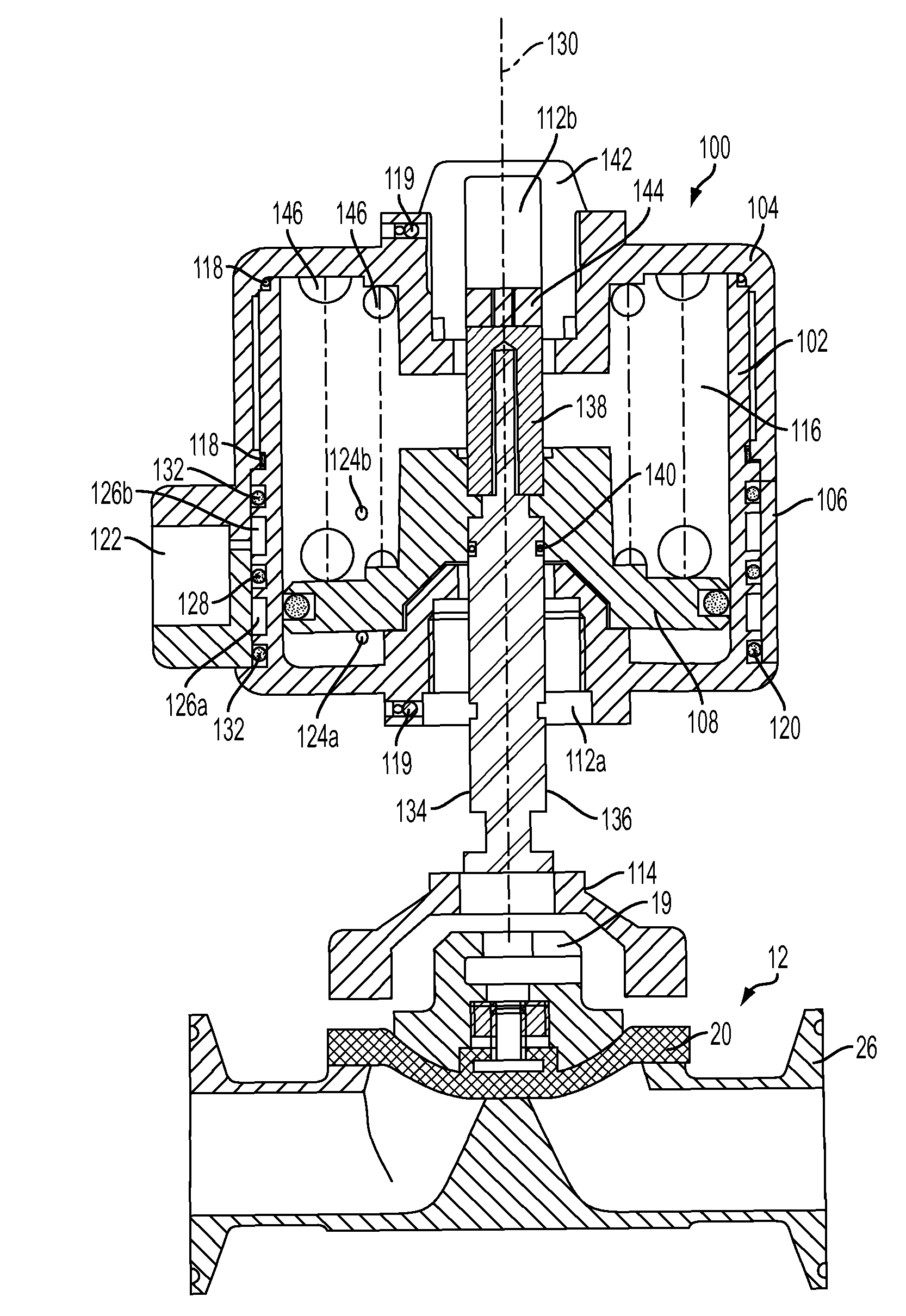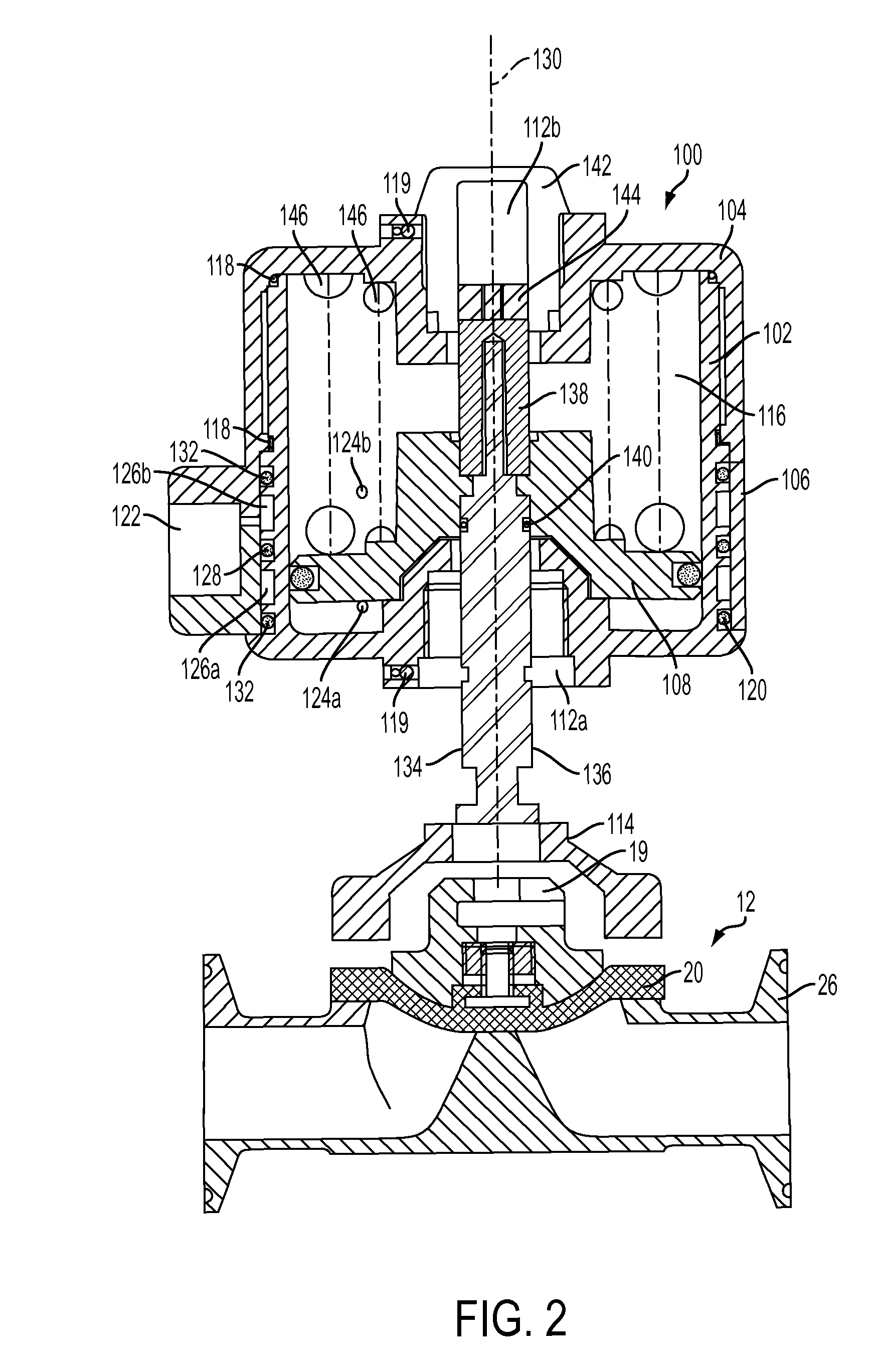Actuator for operating valves such as diaphragm valves
a diaphragm valve and actuator technology, applied in the direction of valve housings, valve operating means/releasing devices, functional valve types, etc., can solve the problems of occupying more space, neither orientation is ideal, and the design of the valve flange has not evolved over the years, so as to overcome or mitigate one or more disadvantages.
- Summary
- Abstract
- Description
- Claims
- Application Information
AI Technical Summary
Benefits of technology
Problems solved by technology
Method used
Image
Examples
Embodiment Construction
[0030]Referring first to FIGS. 2 and 3, an actuator 100 that is designed to operate a diaphragm valve 12 is shown. The actuator is made of a housing 102, a cap 104, a swivel ring 106 and a piston 108. The housing 102 has a cylindrical shape, open at one end and substantially closed at the other end. The substantially closed end is equipped with a connecting interface 112a that is designed to connect the actuator 100 to the valve 12, either directly or, as is the case in the present example, through the use of a bonnet 114. The housing may be made of different materials such as metals or plastics.
[0031]The cap 104 substantially covers the open end of the housing 102. It may also cover a first portion of the exterior of the housing 102. The cap 104 and the housing 102 define a substantially enclosed space 116 inside the housing 102. The cap 104 is sealed against the housing 102 with the use of cap O-rings 118 to prevent air from leaking out of the actuator 100.
[0032]Optionally, the ca...
PUM
 Login to View More
Login to View More Abstract
Description
Claims
Application Information
 Login to View More
Login to View More - R&D
- Intellectual Property
- Life Sciences
- Materials
- Tech Scout
- Unparalleled Data Quality
- Higher Quality Content
- 60% Fewer Hallucinations
Browse by: Latest US Patents, China's latest patents, Technical Efficacy Thesaurus, Application Domain, Technology Topic, Popular Technical Reports.
© 2025 PatSnap. All rights reserved.Legal|Privacy policy|Modern Slavery Act Transparency Statement|Sitemap|About US| Contact US: help@patsnap.com



